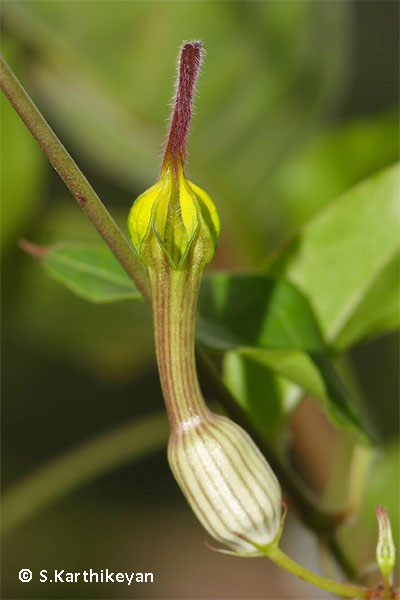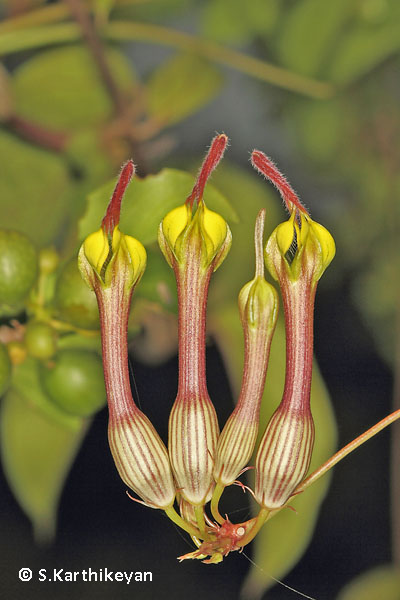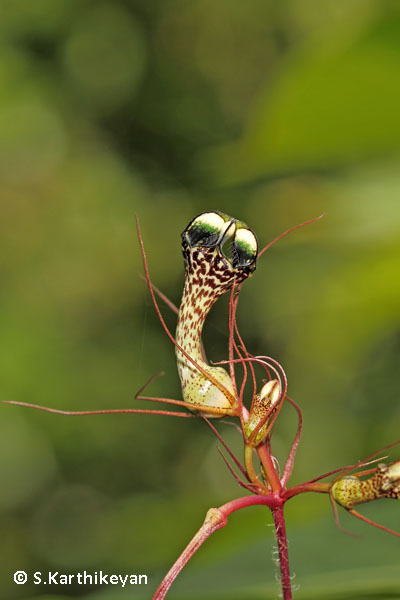It was several years ago, on the outskirts of Bangalore, that I first chanced upon a flower; it was hardly like any other flower I had seen before! I was very curious to find out what it was and also understand why the flowers were so differently shaped. There were no answers coming by for a long time after that. It was much later that I stumbled upon the same flower again – this time in Bannerghatta. There were several flowers on the creeper. I photographed it to my heart’s content. Rummaging through some books in my library, I finally managed to identify the flower as Ceropegia candelabrum.
More recently, while on a holiday in the Western Ghats I was taken on a short trek through some beautiful forest. We saw some butterflies as we went along the partly shaded trail until we stopped and I was pointed to a slender creeper with flowers on it. It was another species of lantern flower – Ceropegia fantastica – a fantastic flower indeed!
Armed with the identity of these plants, I went about searching for some information on this group of curious plants and learnt some interesting aspects.
The genus Ceropegia has about 200 species and occurs largely in India, south Asia, parts of Australia and Africa with South Africa being home to the largest diversity of Ceropegias. In India itself some 51 species have been recorded hitherto; Himalayas and the peninsula seem to be the ‘hot spots’ with most species occurring in these regions. Of these, over 40 are considered to be threatened, rare or endangered – and I had seen 2 very rare plants!
Most species of the genus Ceropegia are twiners while some are herbs and are erect. The structure of the flowers of all species of the genus Ceropegia is basically the same. The flower, as in the images above, is a long tube with the petals, in most species, fused at the tip creating little windows. This structure is perhaps due to their very interesting strategy for achieving pollination.
I had some time ago written about the Birthworts wherein I had discussed various interesting aspects about them. This included their strategy to achieve pollination. Though Lantern flowers belong to a completely different family, the strategy used is very similar to that of the birthworts.
As in the birthworts, the Lantern flowers too have small downward pointing hair along the tube. This deters the pollinators (flies) from turning around and leaving the flower. This therefore acts as a trap, albeit a temporary one, for the pollinators. As the pollinators move about in the bulb at the bottom of the flower, they pick up pollen. As the flower ages and begins to wilt, the hair lining the tube of the flower droops or falls off allowing the pollinator to fly out. As the pollinator enters another flower, pollination is effected.
It is very interesting that two different families have managed to use the same strategy to ensure that their flowers are pollinated. The bizarre looking flowers and the pollination strategy make the Lantern flower very interesting.
So, when you do chance upon a Ceropegia, just let it be, appreciate and admire the beauty of these rare and endangered plants.


